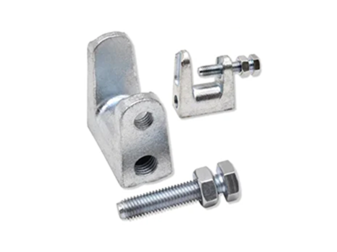Nov . 17, 2024 12:38 Back to list
beam clamp for chain hoist
Understanding Beam Clamps for Chain Hoists A Comprehensive Guide
In the world of lifting and rigging equipment, the importance of safety and reliability cannot be overstated. One of the critical components in this category is the beam clamp, particularly when used in conjunction with a chain hoist. This article will explore what beam clamps are, their importance, types, and considerations when selecting them for your lifting needs.
What is a Beam Clamp?
A beam clamp is a device designed to attach lifting equipment to structural beams securely. It acts as an anchor point for chain hoists, enabling them to lift heavy loads with stability and safety. Beam clamps are crucial in various industries, including construction, manufacturing, and warehousing, where lifting equipment must interface safely with existing structural elements.
Importance of Beam Clamps in Hoisting Systems
Using a beam clamp with a chain hoist is important for several reasons
1. Safety A robust beam clamp can prevent accidents by providing a secure attachment point. It minimizes the risk of slippage or disengagement during lifting, which can lead to catastrophic failures.
2. Versatility Beam clamps are designed to fit various beam sizes and shapes. They offer flexibility in setting up lifting points in different environments without the need for permanent installation.
3. Ease of Use The installation and removal of beam clamps are generally straightforward, allowing for quick adjustments and repositioning, an essential feature in dynamic work environments.
4. Cost-Effectiveness By using beam clamps, companies can avoid the expense and time associated with more permanent solutions, such as installing dedicated lifting points.
Types of Beam Clamps
When selecting a beam clamp, it’s important to understand the different types available
1. Fixed Beam Clamps These clamps are permanently attached to a beam and provide a stable point for hoists. They are ideal for work areas where lifting points are needed consistently.
beam clamp for chain hoist

2. Adjustable Beam Clamps These offer a design that can be adjusted to accommodate different beam sizes. They're particularly useful in environments with varying structural dimensions.
3. Swivel Beam Clamps These clamps allow for rotation to change the direction of the load. This feature can be beneficial in complex lifting operations where maneuverability is crucial.
4. Cross Beam Clamps Designed for situations where two or more lifting points are needed, cross beam clamps can facilitate lifting operations over a broader area.
Selecting the Right Beam Clamp
When choosing a beam clamp for your chain hoist, consider the following factors
1. Load Capacity Ensure the clamp is rated for the load you intend to lift. Exceeding the recommended load can result in equipment failure.
2. Beam Size Check the dimensions of the beam clamp to ensure compatibility with the beams in your working environment.
3. Material Quality Beam clamps are typically made from high-strength steel. Ensure that the clamp you choose is constructed from durable materials to withstand wear and tear.
4. Regulatory Compliance Verify that the beam clamp meets industry standards and regulations for safety. Certifications from recognized organizations can provide assurance of the product's reliability.
5. Installation Requirements Some clamps may require specific tools or installation techniques. Ensure that your team is equipped to handle the installation process efficiently.
Conclusion
In conclusion, beam clamps are a vital component in the safe operation of chain hoists across various industries. By understanding the types of beam clamps available and the factors to consider when selecting them, you can improve safety, efficiency, and flexibility in your lifting operations. Whether you're involved in construction, warehousing, or manufacturing, investing in the right equipment, including high-quality beam clamps, will pay dividends in the form of enhanced safety and productivity. Always prioritize safety and compliance to ensure the best outcomes in your lifting endeavors.


